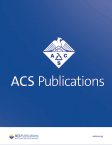氨燃料船舶的风险评估:受损燃料储存罐释放氨气对人类健康的影响
IF 3.4
Q2 PUBLIC, ENVIRONMENTAL & OCCUPATIONAL HEALTH
引用次数: 0
摘要
氨是一种有望实现航运业脱碳的燃料,但与传统的海运化石燃料相比,氨的安全性仍然值得怀疑。随着越来越多的项目开始探索以氨为燃料的船舶,安全问题,尤其是氨释放的急性毒性和风险,成为了首要问题。这项研究的重点是船对船碰撞时氨气意外释放的影响,以及氨气罐的完整性。我们使用 PHAST 软件进行建模,在考虑了储罐类型和位置、破口大小和位置、天气条件和扩散模式等因素后,研究了各种释放情况。结果表明,半加压储罐比全冷藏储罐对人体健康造成的风险更大。水下释放的危害较小,因为大量的氨在浮出水面之前就已经溶解。对水帘和隔离池等缓解措施进行了评估,以确定它们在最大限度地减少氨气排放的影响方面是否有效。这些措施大大降低了对附近居民的风险,但对船上船员的安全却不太有效。这凸显了在以氨为燃料的船舶上确保船上安全所面临的挑战,强调了创新和有效安全设计的必要性。本文章由计算机程序翻译,如有差异,请以英文原文为准。

Risk Assessment of Ammonia Fueled Ships: Consequences on Human Health of Ammonia Releases from Damaged Fuel Storage Tanks
Ammonia is a promising fuel for decarbonizing the shipping industry, but its safety compared to traditional maritime fossil fuels remains questionable. As more projects explore ammonia-fueled vessels, safety concerns, particularly the acute toxicity and risks of ammonia release, are paramount. This research focused on the effects of accidental ammonia releases during ship-to-ship collisions, affecting ammonia tank integrity. We examined various release scenarios, considering factors like tank types and locations, breach sizes and positions, weather conditions, and dispersion patterns, using PHAST software for modeling. Results indicated that semipressurized tanks pose greater health risks on human health than fully refrigerated ones. Underwater releases are less hazardous, as a significant amount of ammonia dissolves before surfacing. Mitigation efforts, such as water curtains and containment basins, were evaluated for their effectiveness in minimizing the impact of ammonia releases. These measures significantly reduce risks to nearby populations but are less effective for crew safety onboard. This underscores the challenge of ensuring onboard safety in ammonia-fueled vessels, highlighting the need for innovative and effective safety design.
求助全文
通过发布文献求助,成功后即可免费获取论文全文。
去求助
来源期刊

ACS Chemical Health & Safety
PUBLIC, ENVIRONMENTAL & OCCUPATIONAL HEALTH-
CiteScore
3.10
自引率
20.00%
发文量
63
期刊介绍:
The Journal of Chemical Health and Safety focuses on news, information, and ideas relating to issues and advances in chemical health and safety. The Journal of Chemical Health and Safety covers up-to-the minute, in-depth views of safety issues ranging from OSHA and EPA regulations to the safe handling of hazardous waste, from the latest innovations in effective chemical hygiene practices to the courts'' most recent rulings on safety-related lawsuits. The Journal of Chemical Health and Safety presents real-world information that health, safety and environmental professionals and others responsible for the safety of their workplaces can put to use right away, identifying potential and developing safety concerns before they do real harm.
 求助内容:
求助内容: 应助结果提醒方式:
应助结果提醒方式:


